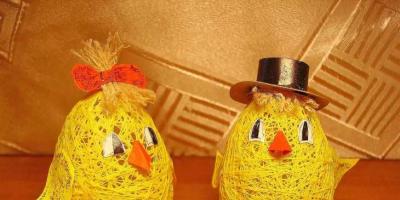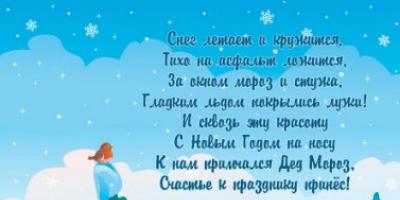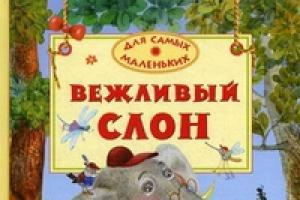Reader question:
I have long been concerned about the question of the date of celebration of the wonderful holiday of Christmas. We celebrate it on January 7, after the New Year. I read in the article “The Story of One Birthday,” published in the magazine Thomas No. 6, 2004, that “for the convenience of believers, the Local Orthodox Churches of Greece, Romania, Bulgaria, Poland, Syria, Lebanon, and Egypt also switched to the Gregorian calendar. The parishes of the Russian Orthodox Church in Western Europe also have permission to celebrate Christmas according to the Gregorian calendar, that is, together with their peoples.” And my question is: is it possible for us to move the date of Christmas celebration to December 25? In addition to the convenience for believers, in my opinion, there is another point: in Catholic countries, both believers and non-believers celebrate and celebrate Christmas together as the main holiday, and the New Year is of much less importance to them. And it used to be like that in Russia. In Soviet Russia, Christmas celebrations were replaced by New Year celebrations. And now for the majority of the population the main holiday remains the New Year. It seems to me that if Christmas is celebrated before the New Year, it can again become the main holiday that both believers and non-believers will enjoy together. And who knows, maybe for many non-believers this will be an impetus to faith. Tell me please, is this possible?
Galina
Priest Evgeny Chebykin answers:
Hello, Galina!
Thank you for your question.
Saint Theophan the Recluse writes in one of his letters that, discussing the meaning and significance of various liturgical church institutions, “... it is necessary to single out from everything external in the Church and place in a special, highest category, the seven Divine Sacraments, established by the Lord Savior for communication to believers Divine grace, without which there is no salvation. In the Church of God, the word of God, containing divinely revealed truth, and the Divine Sacraments, imparting grace, are the same as the apple of the eye... All the other ranks of the Church, although they are also sacred and should be reverently revered, cannot be compared with the seven Holy Sacraments . These Sacraments, although visible, contain and communicate Divine grace, and apart from their Divine grace it is impossible to receive; therefore, salvation will be improved. Yet other ranks of the Church only contribute to the rekindling of grace, but do not communicate it” ([Electronic resource]).
I think, based on this definition, we can allow ourselves to assume that the liturgical calendar refers to those liturgical church institutions that, although sacred and reverently revered, nevertheless, in terms of their importance, they cannot be compared to the Holy Scriptures and the Church Sacraments. Therefore, we should reverently treat our liturgical calendar, but remember that it is not as decisive for our salvation as, for example, the Sacrament of Baptism. In your question, you yourself provided an excellent example that confirms the last statement: the liturgical calendar of some Local Orthodox Churches, as well as parishes of the Russian Orthodox Church in Western Europe, really differs from ours. This circumstance, however, does not give any of us a reason to doubt the effectiveness of the Sacraments performed in these Churches.
Now, to answer the question you asked (is it possible to change the liturgical calendar of the Russian Orthodox Church), you need to turn to the fifth point the second chapter of the Statute of the Russian Orthodox Church, which states that decisions on the most important issues relating to the internal church life are made (at the proposal of the Council of Bishops) by the Local Council of the Russian Orthodox Church (See also:[ Electronic resource]).
A preliminary study of issues considered by the Local and Bishops' Councils, as well as the preparation of draft decisions on these issues, is carried out by a special advisory body - the Inter-Council Presence of the Russian Orthodox Church (See also: [Electronic resource]).
Why is Christmas celebrated on January 7 (December 25)
Why do we celebrate Christmas on January 7 (December 25, old style)? After all, none of the four Gospels say that Jesus Christ was born on this very day.The answer must be sought in the early history of the church, in the 4th century. At that time, the Roman Emperor Constantine, who was a pagan, converted to Christianity and by a special decree legalized the religion of Jesus. The new church immediately waged a fight against existing cults, using traditional pagan rituals and holidays and filling them with new Christian meaning.
Sun worshipers of that time celebrated one of the main holidays in the last days of December, during the winter solstice, when the Earth begins to approach the Sun and becomes brighter. These days were perceived by the pagans as the victory of light over darkness. It was then that Christians began to celebrate Christmas as the birth of the true Sun, the entry into the world of the spiritual light of the true God.
Christmas is the birthday of the Son of God from the Virgin Mary - a day of reconciliation, kindness, peacefulness, a day of glorification of Christ. According to the copyright-by-feast of the Old Testament prophets, Christ was born in the city of Bethlehem in 5508 from the creation of the world. The shepherds were the first to know about his birth. Having accepted this news with all their hearts, they went to worship the baby. The Eastern sages, the Magi, who also believed in Christ, undertook a difficult journey to the place of his birth. But there were also those like King Herod, who wished his death. When he realized that his plan to find the baby had not come true, he ordered the killing of all boys two years old and younger in Bethlehem and its environs. He hoped that among those killed would be the Infant God, in whom he saw a contender for the royal throne. 14,000 babies were killed this way. They are considered the first martyrs for Christ.
In this regard, the period from January 7 to 18, called Christmastide, lasts 12 days and is divided as follows: the first week, from January 7 to 14, is called holy, the second, from January 14 to 18 - terrible evenings, in memory of the extermination of infants in Bethlehem. In churches on Christmas night, festive services are held everywhere. All the candlesticks are burning, the chandelier is burning, the choir is joyfully singing the praises.
Christmas story
The Nativity of Christ is one of the great holidays of Christianity and belongs to the twelve great holidays. This holiday is celebrated by Catholics on December 25, and Orthodox on January 7 according to the new style. This holiday was established in honor of the birth of Jesus Christ in Bethlehem, and is one of the main Christian holidays. These are not two different holidays, but one and the same holiday, celebrated according to different calendar styles, old and new. This veneration of this holiday is primarily associated with the chronology system according to the Julian and Gregorian calendars.
In the Eastern Church, the Feast of the Nativity of Christ is considered the second holiday after Easter. And in the Western Church, in some denominations, this holiday is revered even higher than Easter. This happens because the Nativity of Christ symbolizes the possibility of salvation that opens up for people with the coming (birth) of Jesus Christ into the world. In eastern countries, Easter symbolizes the spiritual resurrection of a person, which is revered more than the Nativity of Christ.
For the Christmas holiday, believers prepare themselves with a forty-day fast, which is called the Nativity fast. The eve of the holiday, which is also called Christmas Eve, is celebrated with a particularly strict fast. On this day, according to church regulations, sochivo (wheat grains previously soaked in water) is eaten, and then only after the appearance of the first evening star, which personifies the appearance of the Star of Bethlehem.
In the 4th century, the rules for celebrating the Nativity of Christ were finally formed. So, for example, if the eve of a holiday falls on a Sunday, the first rule of Theophylact of Alexandria is used to celebrate this holiday. On the eve of the holiday, instead of the usual hours, the so-called Royal Hours are read, and various Old Testament prophecies and events related to the Nativity of Christ are recalled. In the afternoon, the Liturgy of St. Basil the Great takes place, in the case when Vespers does not take place on Saturday or on Sunday, when the Liturgy of St. John Chrysostom is celebrated, at ordinary times. The All-Night Vigil begins with Great Compline, at which spiritual joy over the Nativity of Christ is expressed with the prophetic song “For God is with us.”
In the 5th century, Anatoly, Patriarch of Constantinople, and in the 7th century, Soffonius and Andrew of Jerusalem, in the 8th century, John of Damascus, Cosmas of Mayum, as well as Herman, Patriarch of Constantinople, wrote church hymns for the feast of the Nativity of Christ, which are used by the current church. And also the Christmas kontakion “Virgin this day...” written by the Venerable Roman the Sweet Singer is performed.
However, the beautiful and solemn holiday of the Nativity of Christ is not celebrated in the same way in different countries, but bears the imprint of the customs and traditions of a particular people. For example, in Catholicism, the Nativity of Christ is celebrated magnificently and solemnly with three services: at midnight, at dawn and during the day. This construction of the holiday symbolizes the Birth of Jesus Christ in the bosom of the Father, in the womb of the Mother of God and in the soul of a believer. Since the time of Francis of Assisi, a manger with a figurine of the Infant Christ has been installed in Catholic churches so that believers can worship the image of the newborn Jesus Christ. A nativity scene (that is, the cave where Jesus Christ was born) with figures of the Holy Family is also being built in Orthodox churches.
Both in Catholicism and Orthodoxy, during the Christmas sermon, the idea is especially emphasized that with the birth of Jesus Christ (which symbolizes the coming of the Messiah into the world of people), the opportunity opens up for every believer to achieve the salvation of the soul and, through the fulfillment of the teachings of Christ, to receive eternal life and heavenly bliss. Among the people, the holiday of the Nativity of Christ was accompanied by folk festivities, songs and games, gatherings and caroling, Yuletide fun
Merry Christmas everyone
Nativity - one of the most important Christian holidays. On this day, everyone remembers with gratitude that 2000 years ago God sent down to us his firstborn Son, Jesus Christ, giving hope for salvation to the entire human race. Christmas is celebrated in Catholic and Protestant countries on December 25th Gregorian calendar. In Russia, the Orthodox Church celebrates Christmas too December 25, but according to the old style, i.e. By Julian calendar , which corresponds to January 7 according to the new style. At the first Ecumenical Council in Nicaea, a calculation of the date of Easter was proposed. According to the bishops, all Christians should celebrate Easter on the same day - the first Sunday after the full moon from the vernal equinox. This system of calculating Easter was called the Alexandrian Paschal. Over time, the date of Easter no longer corresponds to the accepted calculation rule. As it turned out, the problem was that the day of the equinox was taken from the calendar, and not from observations. In that year 325, the equinox fell on March 21, and an error in the Julian calendar shifted the day of the equinox every 128 years back by one day, and by 1582 the difference was ten days. It turned out that the rule “The first Sunday after the full moon from the day of the vernal equinox” was violated. To get away from this problem and preserve the wording of the rule, the Gregorian calendar was introduced, the task of which was to maintain a minimum difference between the spring equinox and March 21. On the one hand, the problem was solved, but on the other hand, the error went into the very essence of Easter - in determining the date of Easter itself. The Orthodox tradition, while maintaining the true calculation of the date of Easter, unlike the Catholic Church, has not switched to the Gregorian calendar and carries out all calculations of Orthodox events according to the Julian calendar. Therefore, for example, the Nativity of Christ according to calendar calculation is December 25, but it corresponds to the date January 7 according to the modern calendar - and Orthodox Christians need to celebrate Christmas on January 7. Julian and Gregorian calendars In the 10th century, with the adoption of Christianity, the chronology used by the Romans, the Julian calendar, Roman names of months and a seven-day week came to Ancient Rus'. The Julian calendar was introduced by Julius Caesar in the Roman Republic in 46 BC. e. This calendar was developed by the famous Alexandrian mathematician Sosigenes with a group of Alexandrian astronomers. The Julian calendar turned out to be very simple and quite accurate. After the death of Julius Caesar, the seventh month of the year, July, was named in his honor. The last change to the calendar was made by Emperor Augustus, renaming the eighth month August. In order to have the same number of days in August as in July (Caesar's month), he added one day to it - the thirty-first day, removing it from February. So February became the shortest month of the year. The year according to the Julian calendar begins on January 1, since it was on this day from 153 BC. e. Roman consuls took office. In the Julian calendar, a normal year consists of 365 days and is divided into 12 months. Once every 4 years, a leap year is declared, in which one day is added - February 29. We agreed to call those years leap years whose numbers are divisible by 4 without a remainder. Thus, the Julian year has an average length of 365.25 days. The second “great” reform of the calendar took place in the 16th century, and this was due to the fact that the difference between the Julian and solar years is 11 minutes 14 seconds; in connection with this, the Julian calendar lagged behind nature, and over time, the day of the vernal equinox (from which, according to the decision of the Council of Nicaea in 325, the day of Easter celebration was counted and which was “firmly” assigned to March 21) pointed to increasingly earlier dates of the calendar . By the end of the 16th century. this date “ran” ahead by 10 days. This made calculating Easter extremely difficult. And Pope Gregory XIII decides to carry out a reform. According to the reform, the date of the vernal equinox was returned by directive to March 21st. In Catholic countries, the Julian calendar was replaced by the Gregorian calendar in 1582 by decree of Pope Gregory XIII: the next day after October 4 was October 15. Protestant countries abandoned the Julian calendar gradually, throughout the 17th-18th centuries (the last were Great Britain from 1752 and Sweden). Firstly, the new calendar immediately at the time of adoption shifted the current date by 10 days due to accumulated errors. Secondly, a new, more precise rule about leap years began to apply. A year is a leap year, that is, it contains 366 days if: 1) its number is divisible by 4 and not divisible by 100 or 2) its number is divisible by 400 without a remainder. Thus, over time, the Julian and Gregorian calendars diverge more and more: by 1 day per century, if the number of the previous century is not divisible by 4. In the 18th century, the Julian calendar lagged behind the Gregorian calendar by 11 days, in the 19th century - by 12 days, in the 20th century - by 13. In the 21st century, this difference is 13 days will remain. After all, the year 2000, the first two digits of which are divisible by 4, brings an extra day to the next century. There will be no such extra day in 2100: its first two digits are not divisible by 4, and therefore it is not a leap day. So in the 22nd century, the Julian and Gregorian calendars will diverge by 14 days. In Russia, the Gregorian calendar was introduced by the Bolshevik government on January 24, 1918. Because of this, New Year began to be celebrated earlier than Christmas. The introduction of a new calendar led to the emergence of a holiday called “Old New Year”.
Until the beginning of the twentieth century, it was not customary in Russia to celebrate the New Year in the form in which we celebrate it now. The main winter celebration was considered the Nativity of Christ - a holiday that came along with the Orthodox religion and dedicated to the birth of the Savior. Russian Christmas is somewhat different from European Christmas in its traditions and date of celebration. Why is Russian Christmas celebrated on January 7, and European Christmas on December 25?
history of the holiday
In ancient Rome, it was customary to honor the god Saturn on the first day of the year. This was due to the solar cycle - the longest night of the year was behind us, and the day began to grow. The Romans believed that this was the merit of Saturn and praised him. This holiday fell on December 25 according to the Julian calendar.
With the advent of Christianity, many popular pagan holidays were adapted to the new religion so as not to cause discontent among the people. Saturnalia was no exception. With the light hand of new worshipers at the beginning of the tenth century in Rome, this holiday was renamed Christmas. At the same time, a lot of paganism remained in the ritual part of the holiday. Which, in fact, helped maintain the cheerful atmosphere that people liked so much.
The fact is that the Bible does not indicate the exact date when Christ was born, but a comparison of certain facts gives the priests reason to believe that this could well have happened on the first day of the year. But the celebration caught on because the priests were able to draw parallels between the sun, which the pagans celebrated, and the solar image of Christ the Savior, whom the New Testament calls the “Sun of Truth.”
Since Christianity spread quite quickly across the continent, by 1100 the birth of Christ was celebrated as the main holiday throughout Europe.
In the Orthodox world, Christmas has also become one of the main public holidays. It is believed that they began to celebrate it in the tenth century after the Kiev prince Vladimir baptized Rus'. As in Europe, this holiday was celebrated on December 25th.
So why is Christmas celebrated on January 7th? 
It's all about the calendar. In the sixteenth century, Pope Gregory XIII switched Rome to a more accurate calendar. In subsequent years, most of the world's countries switched to the same time system as the Romans.
But the Russian Patriarch Jeremiah II decided that Russia would go its own way and would not need a new calendar. Thus, at the time of the introduction of the Gregorian calendar, the difference in dates between Russia and Rome was ten days, and by the twentieth century it had grown to fourteen.
The Bolsheviks, having come to power, introduced the Gregorian calendar, but the Russian Orthodox Church remained adamant in its beliefs. Therefore, Orthodox Christmas is celebrated two weeks later than Catholic Christmas - on January 7th.
Traditions of Russian Christmas 
On Christmas Eve, Lent was still in progress, so no feasts were held on this day. But with the onset of Christmastide, mass festivities began.
The main tradition of celebrating Russian Christmas is the glorification of Jesus. It took place not only during church services. It was customary for young people to gather in groups and go from house to house, singing songs glorifying God’s son. In addition, songs were sung in which the owners of the house were wished goodness, health, prosperity and other benefits. It was customary for young people to be rewarded for singing songs with generous refreshments. It was not customary to refuse delicacies to the praisers, so the singers walked around with large bags to collect “gratitude.”
 Since the sixteenth century, the tradition of arranging a nativity scene for Christmas came from Poland. It was most often a puppet theater, and later an acting theater, which invariably depicted the plot of the birth of Christ. According to traditions, the Mother of God and the baby were “played” by icons, but the Magi and other characters were played by dolls or people.
Since the sixteenth century, the tradition of arranging a nativity scene for Christmas came from Poland. It was most often a puppet theater, and later an acting theater, which invariably depicted the plot of the birth of Christ. According to traditions, the Mother of God and the baby were “played” by icons, but the Magi and other characters were played by dolls or people.
The tradition of decorating the spruce came to Russia from Germany. This custom was introduced in 1699 by Peter the Great. True, his decree contained an order to decorate houses with branches of coniferous plants. Spruce trees began to be decorated directly in Russia from the mid-nineteenth century. During the war with Germany in 1916, the Russian Orthodox Church banned decorating Christmas trees, because it was an enemy tradition. The Bolsheviks did not lift this ban until 1935, when the custom of decorating the Christmas tree returned as a New Year's Eve.
Christmas table 
With the end of Lent, the hunting season began, and livestock could be slaughtered. Therefore, the Christmas table in Russia was traditionally bursting with meat dishes. Its indispensable attribute were homemade sausages, jellied meat, lamb flank with porridge, baked pig, chicken or stuffed goose. There were also many closed pies filled with meat, hornbeam or cabbage. Pancakes were baking.
But this is just for Christmas. On Christmas Eve, fasting was still ongoing, so only dietary dishes could be found on the table. It was believed that there should be 12 Lenten meals, like the months of the year, in order to live in goodness throughout the next year.
The indispensable attributes of Christmas Eve are the broth and kutya . Vzvar is a drink made from dried fruits. Kutya is a lean porridge made from wheat grains, honey and poppy seeds. Sometimes nuts or raisins are added to kutya. But the first three components are unchanged, since they carry symbolic meaning. Wheat symbolizes life. Honey – well-being and satiety. Poppy – prosperity and wealth. It is believed that the tastier the kutia, the more successful the year will be for the family.
 In addition to kutia and broth, the Christmas Eve menu could include boiled peas, cabbage rolls, cabbage rolls, Lenten pies, pancakes, Lenten borscht, fried or salted fish, dumplings with cabbage, potatoes, mushrooms or fruits and porridge.
In addition to kutia and broth, the Christmas Eve menu could include boiled peas, cabbage rolls, cabbage rolls, Lenten pies, pancakes, Lenten borscht, fried or salted fish, dumplings with cabbage, potatoes, mushrooms or fruits and porridge.
There were also special rituals in table decoration. So a prerequisite for serving was to lay a little straw under the tablecloth. This symbolized the manger in which Mary laid God's son after birth. Under the table it was necessary to hide some iron object. It was believed that all guests at the feast were obliged to touch it so that the year would pass in health.
An even number of people were supposed to sit at the table. If this did not work, then it was necessary to put another device on the table.
Present
We exchanged gifts before right at the table. This was customary to do after all the guests had tasted the main course.
They gave household utensils, sweets or small souvenirs for Christmas. Expensive gifts were inappropriate on this day.
With the onset of Christmas, Christmastide begins - a period when you need to praise the Lord and celebrate the birth of the Savior. They last until Epiphany. On Christmastide it is customary to visit, walk and have fun. In pagan times, this time was considered the best for fortune telling and predictions, but the Orthodox Church does not approve of these actions.
Regardless of whether you want to celebrate Christmas according to all the canons or not, we wish you to celebrate this holiday in a warm family circle.
“Website about plants” pro-rasteniya.ru Return to NOTES section
 One day, the chairman of the Writers' Union, Alexander Fadeev, was informed that some old woman had come, asking to see her, saying that she was writing poetry. Fadeev ordered to let her in. Entering the office, the visitor sat down, put the knapsack she was holding in her hands on her knees, and said: “Life is hard, Alexander Alexandrovich, help me somehow.” Fadeev, not knowing what to do, said:
One day, the chairman of the Writers' Union, Alexander Fadeev, was informed that some old woman had come, asking to see her, saying that she was writing poetry. Fadeev ordered to let her in. Entering the office, the visitor sat down, put the knapsack she was holding in her hands on her knees, and said: “Life is hard, Alexander Alexandrovich, help me somehow.” Fadeev, not knowing what to do, said:
Do you really write poetry?
- I wrote, they published it once.
“Well, okay,” he said to end this meeting, “read me some of your poems.”
She looked at him gratefully and began to read in a weak voice:
The Forest Raised a Christmas Tree.
She grew up in the forest.
Slim in winter and summer,
It was green...
So you wrote this? - exclaimed the amazed Fadeev. By his order, the visitor was immediately registered with the Writers' Union and provided with all possible assistance.
Raisa Adamovna Kudasheva (that was the old lady’s name) lived a long life (1878-1964). Born Princess Gidroits (Lithuanian princely family), in her youth she served as a governess to Prince Kudashev, and later married him. She worked as a teacher, and in Soviet times as a librarian. In her youth she published mainly in children's magazines.

Kudasheva treated fame with amazing indifference and hid for many years under various initials and pseudonyms. She explained it this way: “I didn’t want to be famous, but I couldn’t help but write.” In 1899, Kudasheva’s story “Leri” was published in the magazine “Russian Thought”, which remained her only work for adults. The story tells about the adolescence and youth of a girl from a noble family, her first great love for a brilliant officer. In total, Raisa Kudasheva published about 200 songs and stories, fairy tales and books of poetry.
In 1903 she wrote the Christmas poem “The Christmas Tree”:
Shaggy branches bend
Down to the children's heads;
Rich beads shine
Overflow of lights;
Ball hides behind ball,
And star after star,
Light threads are rolling,
Like golden rain...
Play, have fun,
The kids have gathered here
And to you, beautiful spruce,
They sing their song.
Everything is ringing, growing,
Goloskov children's choir,
And, sparkling, it sways
The Christmas trees are magnificently decorated.***
A Christmas tree was born in the forest, it grew in the forest,
She was slim and green in winter and summer!
The snowstorm sang songs to her: “Sleep, Christmas tree... bye-bye!”
The frost was wrapped in snow: look, don’t freeze!
The cowardly gray bunny was jumping under the Christmas tree,
Sometimes the wolf himself, the angry wolf, ran at a trot.***
More fun and friendly
Sing, kids!
The tree will bow soon
Your branches.
The nuts shine in them
Gilded…
Who is not happy with you here?
Green spruce?***
Chu! The snow in the dense forest creaks under the runner,
The hairy horse is in a hurry and running.
The horse is carrying wood, and there is a man in the wood.
He cut down our Christmas tree to the very root...
And here you are, dressed up, you came to us for the holiday,
And she brought a lot of joy to the children.***
More fun and friendly
Sing, kids!
The tree will bow soon
Your branches.
Choose for yourself
What to like...
Ay, thank you
Beautiful spruce!
These verses signed “A.E.” were published in the Christmas issue of Malyutka magazine. As you can see, they were something like a Christmas game scenario. Children are encouraged to sing “more cheerfully and friendly” in order to earn gifts and goodies hanging on the Christmas tree. But the “voices of children’s choirs” based on her poems were heard only a few years later.

In 1905, the Kudashevo “Yolka” caught the eye of agronomist and passionate music lover Leonid Karlovich Bekman (1872-1939). He was a Baltic German, a hereditary nobleman, who had extraordinary musical abilities. In the student choir of the university, he sang the part of the future outstanding singer Sobinov, when for some reason he could not perform. Shortly before the events described, in February 1903, L. Beckman married Elena Shcherbina, the adopted daughter of E.N. Shcherbina (director of the Slavic Bazaar Hotel), a talented pianist who graduated from the Moscow Conservatory four years earlier with a gold medal, later an Honored Artist of Russia, a professor at the Moscow Conservatory. Her professional skill was such that, for the sake of a joke, she could lie on her stomach on the lid of the instrument and play upside down.

L. Beckman with his family
The birth of the song occurred on October 17, 1905 - the day when the Tsar signed a historical manifesto that transformed the state foundations of the Russian Empire.
According to the memoirs of Elena Bekman-Shcherbina, it was like this: “On October 17, 1905, my eldest daughter Verochka turned two years old, and in the morning I gave her a living doll - sister Olya, who was born at half past midnight, that is, also on October 17. Verochka was absolutely delighted. While I was still lying in bed, Leonid somehow sat down at the piano, sat Verika on his knees and composed a song for her based on a poem from the children’s magazine “Malyutka” - “A Christmas tree was born in the forest, it grew in the forest...” Verochka, who had excellent hearing , quickly learned it, and so as not to forget the song, I wrote it down. Subsequently, we both began to compose other songs for children. This is how the collection “Verochka’s Songs” arose, which went through four editions in a short time, then “Olenka the Songster”.
Later, music critics found that Beckman's music was not entirely original. The melody of “Yolki” echoes the song of the Swedish poet and composer Emmy Köhler “Thousands of Christmas candles are lit” (“Nu tändas tusen juleljus”, 1898):
And with the German student song of the early 19th century “Wir hatten gebauet ein stattliches Haus”:
Nevertheless, Rachmaninov, Taneyev, and Scriabin spoke approvingly of “Yolka.” After this, the new song began to gain wider recognition, although Kudasheva did not even know about it for many years.
In 1933, when the New Year was officially celebrated in the USSR for the first time, designed to supplant the Christmas holidays, Kudasheva-Beckman’s song was again heard under every tree. Kudasheva's text turned out to be ideologically sterile, and therefore acceptable - Christmas is never mentioned in this Christmas song!
Why do men prefer blondes or the evolution of the ideal of female beauty Blonde-haired, long-legged, slender - behind the phenomenon of the attractiveness of blondes are...
Christmas is one of the most important Christian holidays. On this day, the son of God Jesus Christ was born in the city of Bethlehem.
The Orthodox Church celebrates the Nativity of Christ on January 7, and Western Christians who live according to the Gregorian calendar celebrate December 25.
Sputnik Georgia asked what is the reason for this temporary discrepancy between the celebration of Christmas in the past and now.
Nativity
They began to celebrate the Nativity of Christ in the first centuries of Christianity - a holiday was established in honor of the Birth of the Son of God in the flesh by the Virgin Mary. Jesus Christ, according to the Gospel, was born in the Jewish city of Bethlehem during the reign of Emperor Augustus.
Mary, the mother of Jesus Christ, and her husband Joseph came to Bethlehem from the city of Nazareth, where they lived, fulfilling the order of the ruler Augustus to appear to the entire population for the census.
Mary and Joseph were able to find accommodation for the night only in a cave intended for cattle stalls, since all the places in the hotels of Bethlehem were occupied due to the census. The Blessed Virgin gave birth to the Son of God in a cave, swaddled the Infant of God and placed him in a manger - a feeding trough for livestock.
The news of the birth of the Savior of the world, in the midst of midnight silence, when all humanity was engulfed in sleep, was heard by the shepherds guarding the flock. With the news that the Savior had come to the world, angels appeared to the shepherds, who were the first to come to the cave to worship the Infant God.
In the sky at the moment of the Savior’s birth, the Star of Bethlehem shone, which, according to Eastern prophecies, signified the time of the coming into the world of God’s Son, the Messiah, for whom the Jewish people were waiting.
The ancient sages who reached Bethlehem, following the guiding star, also bowed to the Newborn Savior. The Magi brought the Son of God gifts from the East - gold, incense and myrrh, which had a deep meaning.
In particular, they brought gold as a tribute to the king, incense as a tribute to God, and myrrh as a person who was about to die, since myrrh was anointed with the dead in those distant times.
The tradition of making the Star of Bethlehem and decorating the New Year tree with it came from those ancient times. They began to celebrate this event as a holiday much later - one of the first mentions of the holiday of the Nativity of Christ dates back to the 4th century.
history of the holiday
In the Eastern and Western Churches until the 4th century, the Nativity of Christ, which was combined with the feast of Epiphany, was celebrated on January 6 - this holiday was known as Epiphany.
The remembrance and glorification of the event of the appearance of the Son of God in the flesh was the main purpose of establishing the holiday.
For the first time, the Nativity of Christ was separated from Baptism in the Roman Church in the first half of the 4th century. Pope Julius I approved the date December 25 as the date of the Nativity of Christ in 337.
Since then, the entire Christian world has celebrated Christmas on December 25th. The Armenian Church is an exception, which to this day celebrates Christmas and Epiphany on January 6 as a single holiday of Epiphany.
The Church, moving the holiday to December 25, wanted to create a counterbalance to the pagan cult of the sun and protect believers from participating in it.
In addition, the church fathers believed that December 25 most historically corresponds to the birthday of the Lord Jesus Christ.
The celebration of the Nativity of Christ in the Eastern Church on December 25 was introduced later than in the Western Church - in the second half of the 4th century. The separate celebration of the Nativity of Christ and the Baptism of the Lord was first introduced in the Church of Constantinople around 377. From Constantinople, the custom of celebrating the Nativity of Christ on December 25 spread throughout the Orthodox East.
The Nativity of Christ is celebrated on December 25, but according to the old style, that is, on January 7, by the Jerusalem, Russian, Georgian, Serbian and Polish Orthodox churches, Mount Athos monasteries (in Greece), as well as Eastern Rite Catholics and some Protestants who adhere to the Julian calendar.
The Nativity of Christ on January 7 is also celebrated by the Coptic Orthodox Church in Egypt, Orthodox and Greek Catholics in Ukraine, and Orthodox in Macedonia, Belarus, Kyrgyzstan and Kazakhstan.
Date difference
The difference in the dates of celebration between Catholics and Orthodox Christians arose after the Roman Catholic Church carried out calendar reforms in 1582, which were not recognized by the Orthodox Church.
The Julian calendar, introduced by Emperor Julius Caesar in 46 BC, was much more convenient than the old Roman one, but still turned out to be not clear enough. Therefore, Pope Gregory XIII in the 16th century carried out a reform, the purpose of which was to correct the growing difference between the astronomical year and the calendar year.
Pope Gregory introduced a new, Gregorian calendar (new style), and the Orthodox Church continued to celebrate church holidays in the old way - the Julian calendar.
In the year when the Gregorian calendar, according to which most countries of the world, including Georgia, now live, was introduced, the difference between the old and new styles was 10 days, and in our century - 13 days.
P.S. Considering that there are a lot of disputes in Georgia related to the date of Christmas celebration, I decided to publish a text written in fairly simple language on the website “Sputnik Georgia” - when, what and why, regarding the Nativity of Christ.
I am sincerely surprised how a considerable part of the Mishists and liberals foam at the mouth, hate almost everything connected with Orthodoxy and explain their hatred by the fight against the evil empire. And so, weakly, just lay bare and say that it’s not about the evil empire, but that I simply don’t believe and despise Orthodoxy? So, apparently, it’s weak.... And then how can you gain percentages in elections?
Some Mishists directly shout out before every Christmas that if we celebrate on the 25th, then we’ll cut the umbilical cord with Russia and become members of the European family... And you know, it seems that they are so accustomed to this chatter that the Georgian majority, in for the most part, they no longer consider it necessary to take such verbiage seriously. Well, they talk and talk, but when were they silent?
What can I say? In my opinion, your orientation cannot absolutely change depending on when you celebrate Christmas. That is, changing the places of the syllables does not change the sum at all...
These are just polls of chatterboxes, absolutely far from the faith and constantly eager to shout something against...
Lord, we seem to have democracy... you can celebrate the 25th and 7th and not celebrate and ignore them at all... Or maybe Misha should be appointed Patriarch so that he can fix everything over the past... centuries, in a couple of days, I’m sure will cope, and... we will become like the elves and giggle at the fact that we have been marking time for so many centuries?








